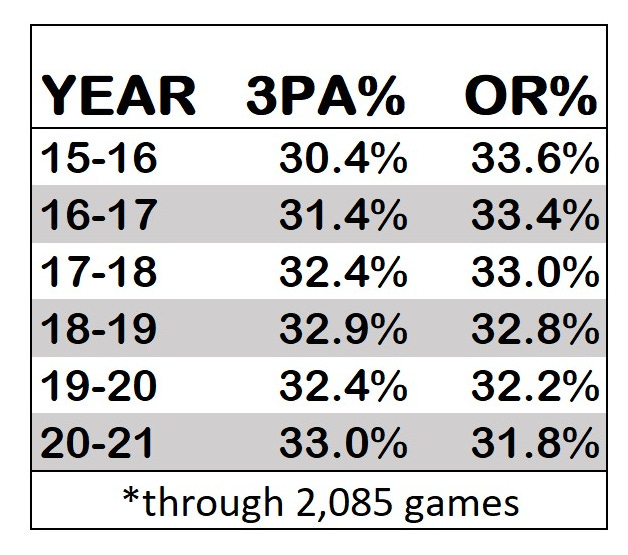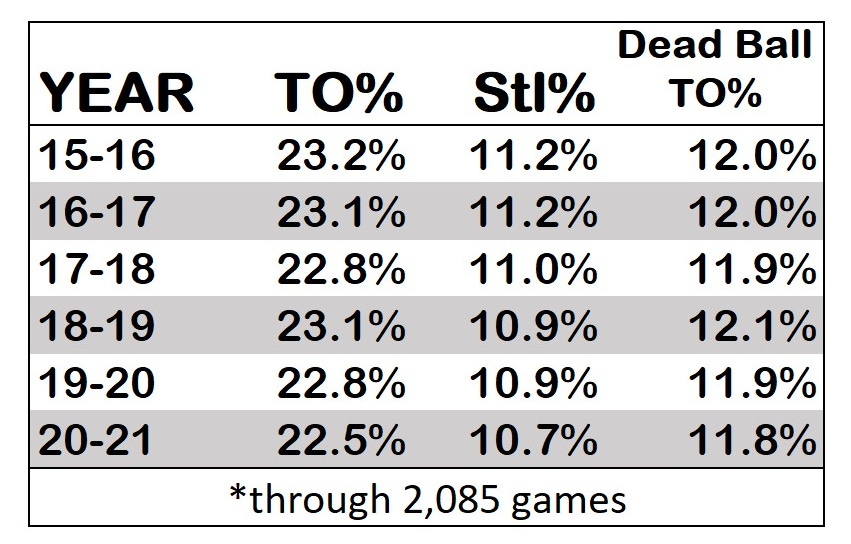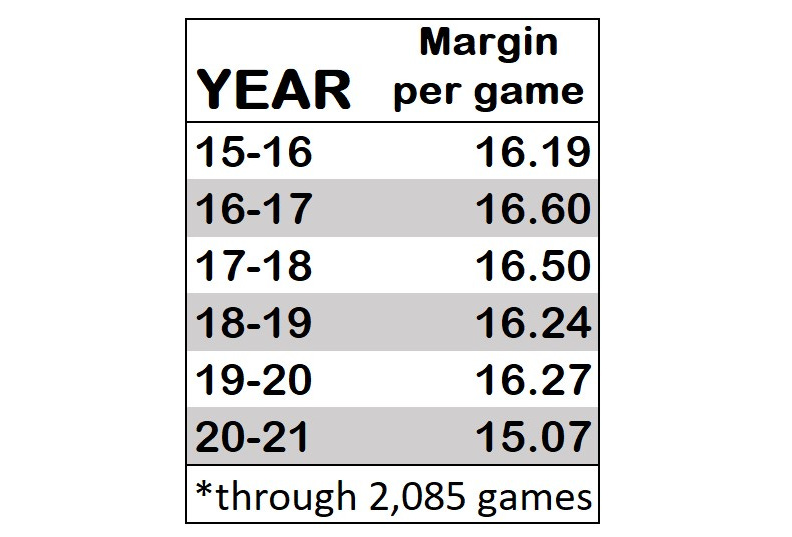Statistical Trends Across Division I Women’s Basketball
Examining the effects of an unprecedented season on the numbers
Thanks for reading the Her Hoop Stats Newsletter. If you like our work, be sure to check out our stats site, our podcast, and our social media accounts on Twitter, Facebook, and Instagram. You can also buy Her Hoop Stats gear, such as laptop stickers, mugs, and shirts!
Haven’t subscribed to the Her Hoop Stats Newsletter yet?
This season is weird. Game cancellations, back-to-backs, limited nonconference schedules, travel restrictions, empty arenas, remote broadcasters — there have been all sorts of unique factors affecting college basketball during the pandemic. But have they affected the stats?
The short answer is “probably.” The slightly-less-short answer is “it’s impossible to know which statistical trends are due to the pandemic and which are due to the natural evolution of the game, but many of them are likely a mix of both.”
Regardless of the reasons, we can certainly take a look at some of the numbers this season to see how they differ from those in recent years. There have been 2,085 games played between two Division I teams this year, so for consistency we’ll look at stats through that many games in previous years as well. Some stats tend to change throughout the season (shooting gets better, for example, and games get slower) so using the first 2,085 games will give us a more apples-to-apples comparison. Also of note is that the Her Hoop Stats database begins in 2015-16, so any mention of the database will be referring to six seasons’ worth of data.
Offensive rebounding is down
This has been a trend across most levels of basketball for several years now, and it’s no different in women’s college hoops. Each year of the Her Hoop Stats database has seen a lower offensive rebounding rate than the last. This year’s sits at 31.8%, falling below 32% for the first time. As the three-point revolution continues to sweep the sport, more and more bigs are pulled away from the basket in order to stretch the floor. It’s great for spacing, but it takes offensive rebounders away from the rim.
Additionally, many coaches don’t even try to get offensive rebounds anymore, opting instead to prevent opponents’ looks in transition. Kim Mulkey and Dawn Staley aren’t of that mindset, however — Baylor and South Carolina are the top two active teams in offensive rebounding rate, both pulling down over 45% of their own misses.
Fouling is down
Empty arenas might deserve the blame (or credit?) here. Fouling is as closely correlated with home court as any stat in basketball, which makes intuitive sense. Refs are human, and even the most unbiased official is going to have some subconscious desire to please the home crowd. It could be that refs are simply calling fewer fouls against road teams without the threat of angry home fans; then again, in theory, a lack of fans would be just as likely to lead to more fouls being called against home teams.
There’s no great way to know for sure if attendance restrictions have anything to do with decreased foul rates this year, but most of us will take a cleaner game however we can get it.
Turnovers are down
Possibly the most perplexing trend of this season is that, despite playing at faster paces and getting less shot clock to work with after offensive rebounds than in any season prior to 2019-20, teams are turning it over at a lower rate than in any of those years. It’s not just one factor driving it; steal rates and dead ball turnover rates this season are both the lowest of any season in the Her Hoop Stats database.
Does fan noise cause turnovers by flustering opponents? Does reduced travel cut down on tired legs and thus decrease avoidable errors? Are coaches starting to realize how important it is to emphasize protecting the ball? Maybe it’s all of the above. But it’s one of two main forces behind the improved offense across the country this season. The other being …
Shooting efficiency is up
Well, except for three-point percentage. But three-point percentage is only slightly lower than it has been, and that can probably be chalked up to a rise in three-point attempts (higher volume generally leads to lower efficiency). Two-point percentage and free throw percentage are both higher than they were in any of the previous five years. (Road teams are shooting above 69% from the line for just the second time since 2015-16; perhaps it’s easier to convert from the stripe without opposing fans trying to distract you?) Combine that with the fact that shot selection is improving as teams are taking more threes than ever, and even with the small dip in three-point percentage, the average shot is still more efficient this season.
Games are closer
This one is almost certainly at least partially due to the shortened schedule this year. Conference games are usually much more evenly matched than nonconference games. With most teams playing far fewer nonconference games than usual — even zero in some cases, such as the Patriot League — a much higher percentage of games this year have been in-league. The growing parity in women’s college basketball may also have something to do with it.
Regardless of the reasons, the result is good for just about everyone. The average margin per game is below 16 for the first time in the Her Hoop Stats database, despite a faster pace leading to more possessions per game. The only people who enjoy blowouts are people affiliated with the winning team and people who have a sick love of misery and suffering. For the rest of us, give us thrillers and buzzer beaters.
In a season full of circumstances that we’ve never seen before and (hopefully) will never see again, there is a lot of potential for statistical anomalies and oddities. As the game continues to become more perimeter oriented and shifts in other ways, some of these trends will persist, so it might be a few years before we can look back and analyze with any certainty which changes were related to the pandemic and which weren’t. For now, whatever the game looks like, let’s just be grateful that we have it.
All stats are from Her Hoop Stats and include games played through February 1.
Thanks for reading the Her Hoop Stats Newsletter. If you like our work, be sure to check out our stats site, our podcast, and our social media accounts on Twitter, Facebook, and Instagram. You can also buy Her Hoop Stats gear, such as laptop stickers, mugs, and shirts!
Haven’t subscribed to the Her Hoop Stats Newsletter yet?






